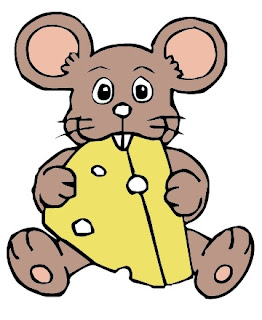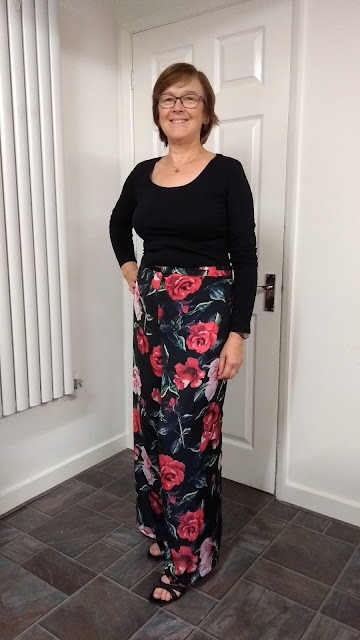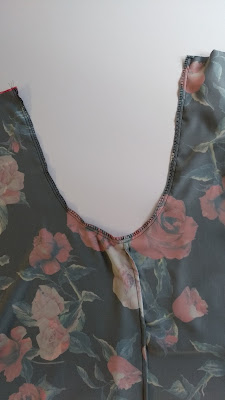I always like to have some handmade decorations at Christmas and this year is no exception. I had bought a selection of Christmas craft fabric so I decided to make some bunting. I used four different fabics all with a red, white and green colour scheme, but quite varied.
I cut my triangles 7 inches wide at the top and 7 inches long. These dimensions allowed me to cut a 7 inch wide strip of fabric and then to cut alternate triangles so that nothing was wasted.
I stitched two triangles right sides together with a 1/4 inch seam allowance. I have noticed that a lot of commercially produced bunting is only a single thickness or has the raw edges showing but I like to have a neat finish. I trimmed the seam allowance at the point to allow the triangles to turn out neatly and then pressed them before attaching then to the binding.
For this bunting I purchased a packet of red bias binding. Christmas is always a busy time so I decided not to spend time making my own bias tape. The length of the binding dictated the length of my bunting. My binding is 98 inches long which allowed room for 13 flags to be attached.
Once all of the flags were sewn, turned out and pressed I pinned them inside the folded bias tape at regular intervals. When the flags were pinned onto the tape I top-stitched with matching thread along the open edge of the bias binding removing the pins as I stitched. As you can see the stitching is almost invisible.
 |
| Top-stitching along the binding |
For me, the most important thing was to balance the colours and since two of my fabrics were red I made 4 green and gold flags (A); 4 white, robin flags (B); 3 red, reindeer flags(C) and only two red, Christmas tree flags(D). I placed the flags in the following order - C,ABD,ABC,ABD,ABC
My cutting out technique worked really well for the random designs of the robins and the golden holly, when it didn't matter which way up the triangles were. However, The red, reindeer design and the Christmas trees were directional patterns. I hate to waste fabric but I cut the red triangles the right way up until I came to the last 2 reindeer flags. Then I found that I would need to cut a second 7 inch strip and I couldn't bring myself to do this, so I used two upside-down triangles for the backs of the flags at each end of my bunting.
 |
| The front and back of two reindeer flags. |
As a result I have to be careful which way round I hang it but I always intended to hang this strip of bunting against the wall where you can't see the wrong side.
I am really pleased with this string of Christmas bunting. I love the colour combination, which is very festive. I am sure that I will keep the bunting and get it out year after year when we decorate the house for Christmas. My decorations stay up until 12th night and then this bunting will be stored away in a box in the loft until next year. It won't take up much room and if it gets a bit creased in storage a quick iron should make it as good as new. What more could you ask of your Christmas decorations?






















































